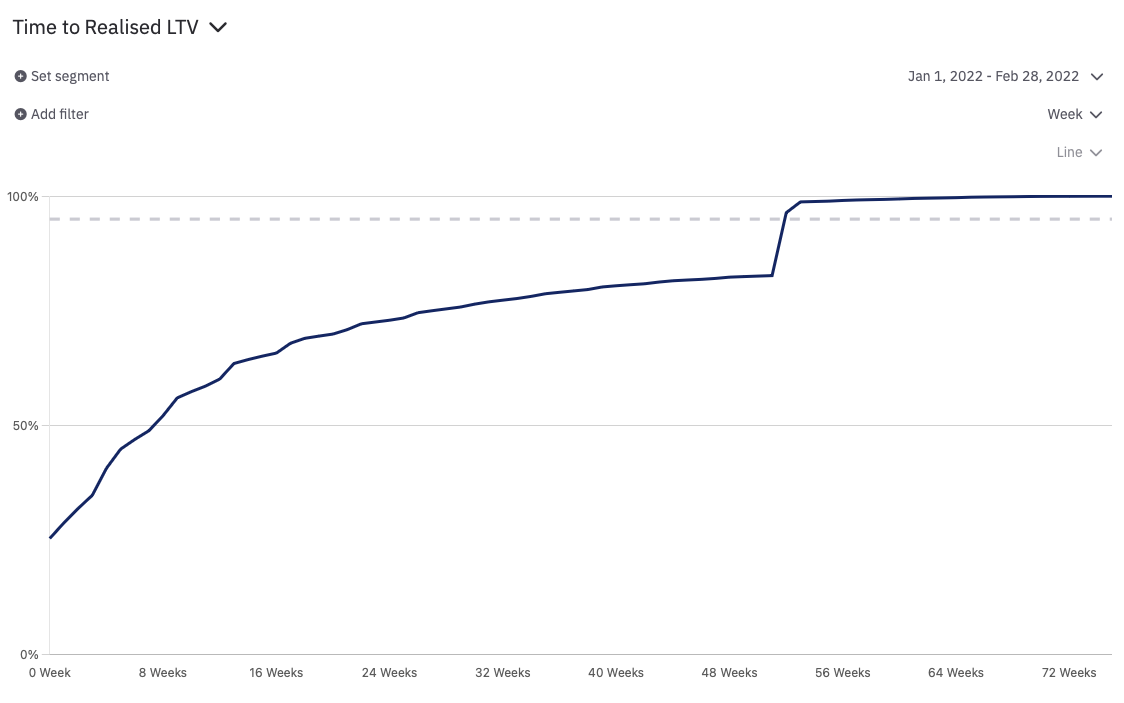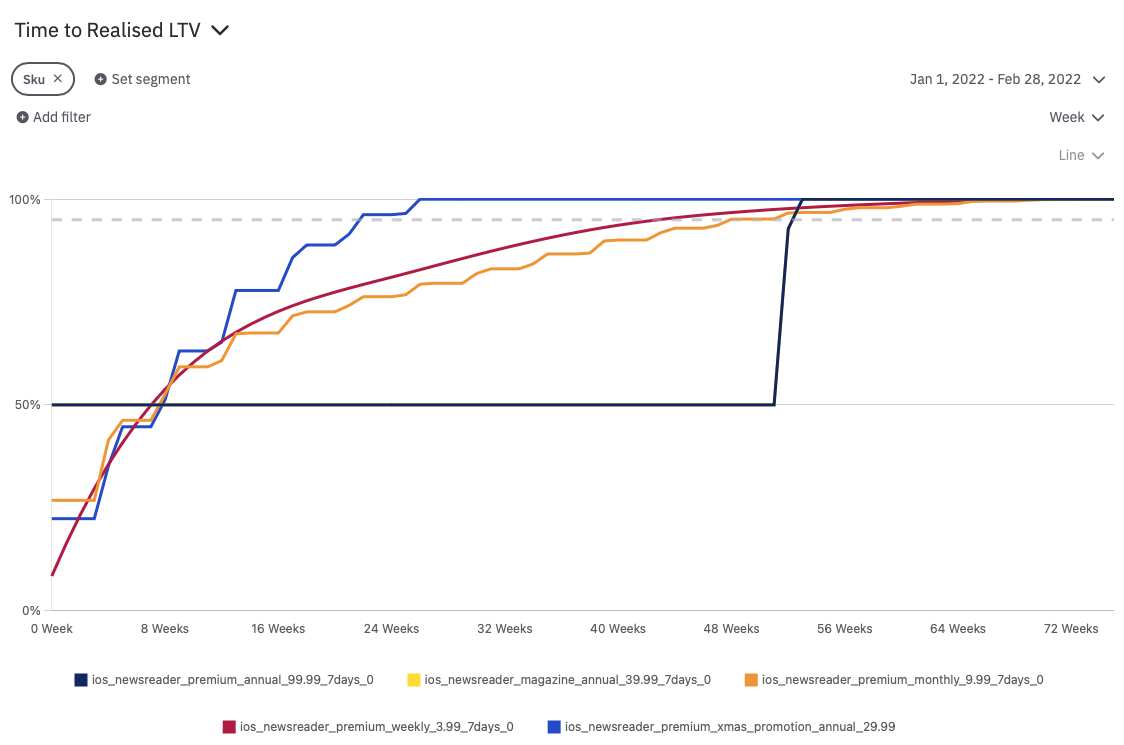Time to Realised LTV
The Time to Realised LTV metric is a valuable measure providing insights into the average time it takes for users to achieve their Lifetime Value (LTV). This metric is calculated based on all subscriptions within a specific period of time and offers an understanding of the time interval required for an average user to realize their LTV.
Calculating Time to Realised LTV
To calculate the Time to Realized LTV, we consider all subscriptions starting within a specific period of time. The time interval for analysis must be set to ensure that users have had sufficient time to realize their LTV. The default is the one year window before the last three months, but a different time window might be more relevant for any specific app. It is crucial to choose a time interval that extends far back enough to capture subscribers' complete journey such that they will have realized their LTV by the current time.
 The chosen granularity determines the units of the time axis while the dashed line indicates the reference of 95%. Segmenting by SKU can make it easier to interpret this graph. Different subscription lengths have different behaviors.
The chosen granularity determines the units of the time axis while the dashed line indicates the reference of 95%. Segmenting by SKU can make it easier to interpret this graph. Different subscription lengths have different behaviors.

Interpreting Time to Realised LTV
By analyzing the Time to Realized LTV metric, you can gain valuable insights into the engagement and revenue potential of your user base. Understanding how long it typically takes for users to achieve their LTV can help you make informed decisions regarding user retention strategies, resource allocation, and overall business growth.
- Short Time to Realized LTV: A shorter time period indicates that users are quick to realize their LTV. This could be a positive indicator, suggesting that your product or service is effective at delivering value to users early on in their journey. In the case of subscriptions, though, it might indicate that the users are not willing to keep paying for your service, and suggest potential areas for improvement, such as onboarding processes, feature adoption, or user engagement strategies.
- Long Time to Realized LTV: A longer time period suggests that users take more time to reach their LTV. For subscription models, in general, the longer the time the higher the LTV. This could indicate that users are in fact willing to keep paying for a product, but over time you might observe a flattening of the curve, indicating the natural effect of users churning after every subsequent subscription time.
By monitoring the Time to Realized LTV over time, you can track trends and identify patterns. Comparing it with other metrics, such as Cohort Retention Analysis and Average Revenue, can provide a more comprehensive understanding of the user journey and enable data-driven decision-making to optimize user retention and revenue generation.
Updated over 1 year ago
